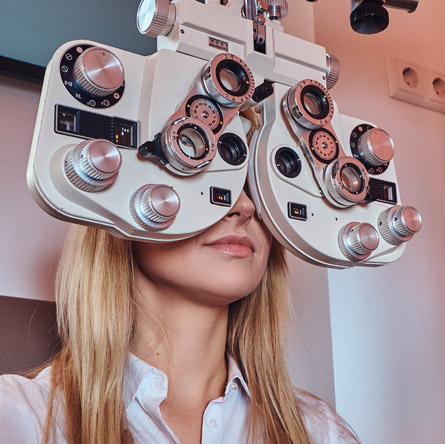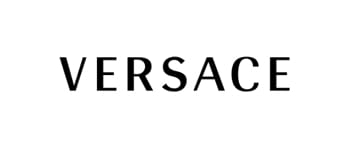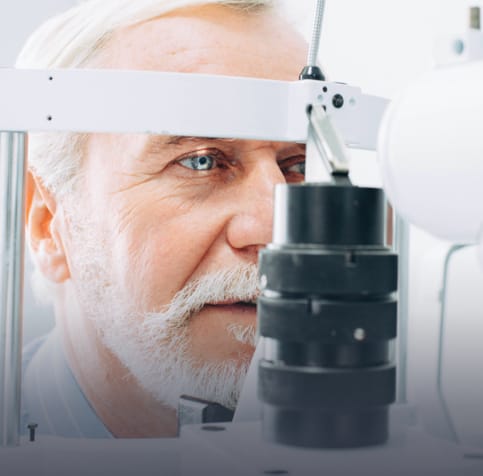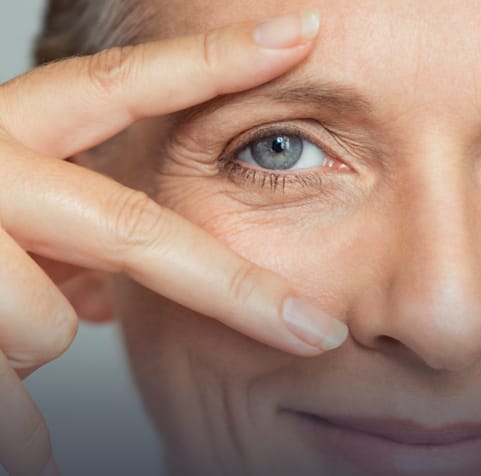Thorough Eye Exams for Your Family
Regular eye exams are an important part of your overall health at any age. We are here to help.
An eye exam is important for ensuring your glasses or contacts prescription is up to date and that any eye conditions or diseases are identified and addressed as soon as possible. You don’t need to wait for a vision problem before you come in to see us.


When to Get an Eye Exam
Your optometrist can recommend the best eye exam schedule for you or your child based on your particular needs. Generally speaking, the Canadian Association of Optometrists recommends the following schedule for children and adults:
- Infants should have their first exam between 6 and 9 months
- Preschoolers should have at least one eye exam between the ages of 2 and 5
- Children and youth should have an exam annually between ages 6 and 19
- Adults should have an exam every 2 years
- Seniors over 65 should have an annual exam
- People with diabetes should have an annual exam
What to Expect in Your Comprehensive Exam
Everyone’s eyes are different, so in your exam, we will take time to discuss your medical history, your current medications, and even your diet and lifestyle. This is an opportunity for you to share any vision concerns you have, from symptoms to needing a new prescription, and ask questions about your visual health.
We will test your visual acuity and assess any refractive errors, like nearsightedness, farsightedness, and astigmatism.
Our Technology
In your exam, we will focus on the big picture of your ocular health, using retinal imaging to peer inside your eyes for any signs of diseases using the following diagnostic technology.
Optomap
Optomap retinal imaging grants a wide-angle view into your eyes, allowing monitoring of your retinal health over time.
Some of the first signs of diabetes, stroke, or cancers can be found with the use of optomap imaging, so we can begin treatment or refer you to a specialist as early as possible.
Fundus Photography
Our fundus camera complements our Optomap retinal imaging equipment to provide closeups of some of the most important structures of your eye. This colour image helps us in diagnosing and documenting conditions including diabetic retinopathy, age-related macular degeneration, diabetic macular edema, and retinal detachment.
OCT Retina & OCT Optic Nerve Analysis
Optical coherence tomography (OCT) scans allow us to see a cross-section of the retina and optic nerve, which is essential in the diagnosis of a number of eye conditions. These include:
- Macular edema
- Age-related macular degeneration
- Glaucoma
- Diabetic retinopathy
Oculus Keratograph
The Oculus Keratograph is a non-invasive, high-definition colour camera used to diagnose various types of dry eyes. It’s effective for examining the meibomian glands, evaluating the lipid. The Oculus Keratograph is a non-invasive, high-definition colour camera used to diagnose various types of dry eyes. It’s effective for examining the meibomian glands, evaluating the lipid layer, assessing the tear film break-up time, and measuring the tear meniscus height. It also takes a detailed topography of the eye’s surface that can show astigmatism.
Humphrey Visual Field Test
The Humphrey Visual Field Test is a non-invasive diagnostic test that uses lights to map your visual field. You’ll be directed to focus on a centre point and click a button when you see the lights. It’s used to diagnose and monitor patients with glaucoma.
Macular Pigment Optical Density
Macular pigment optical density (MPOD) is a measurement of macular pigment in the centre of the retina. It works as a filter for the eye, protecting the macula from blue light and reducing stress-induced damage.
By measuring your MPOD, we can evaluate your risk for developing age-related macular degeneration and other retinal diseases.
Intense Pulsed Light Therapy
Intense pulsed light therapy (IPL) is an aesthetic treatment used to improve the look of scars, age spots, fine lines, and spider veins by targeting light on the troublesome areas. It’s also been revealed to be effective for treating dry eyes.
It works by expressing meibum in the meibomian glands and coagulating blood vessels, reducing inflammation that can contribute to dry eye symptoms.
Low-Level Light Therapy
Low-Level Light Therapy (LLLT) is an effective treatment for dry eye, particularly when meibomian gland dysfunction is present. This non-invasive procedure uses specially designed lights to warm up the eyelids, allowing any clogs in the meibomian glands to liquefy.
Unclogged, the meibomian glands can produce the oil needed to keep the tear film healthy and the eyes hydrated. The process is quick—each session usually takes about 15 minutes—and well-tolerated by most patients.
Our Location
Find us at Bramalea City Centre mall, just inside entrance 4 next to Shoppers Drug Mart.

Our Address
- #387, 25 Peel Centre Drive,
Bramalea City Centre - Brampton, ON L6T 3R5
Contact Information
- Phone: 905-458-8819
- Fax: 833-377-0459
- Email: mann_len@hotmail.com
Hours of Operation
- Monday: 10:00 AM – 8:00 PM
- Tuesday: 10:00 AM – 8:00 PM
- Wednesday: 10:00 AM – 8:00 PM
- Thursday: 10:00 AM – 8:00 PM
- Friday: 10:00 AM – 6:00 PM
- Saturday: 10:00 AM – 3:00 PM
- Sunday: 10:00 AM – 4:00 PM
Our Brands




Our Testimonials
Great clinic, the staff are friendly, I didn’t have to wait too long and Dr. Michael Sher was very caring. He carefully examined my eyes with great care and patience. 10/10 Highly recommended.
SARTHAK S.
Staff are always friendly and accommodating. Use of technology and equipment to complete analysis and diagnostics is comforting to identify potential issues or to confirm normal conditions. Dr Mann is typically quite busy but takes time go through the exam findings. That said, I had an emergency situation a couple of years ago and I remain thankful that staff scheduled me past closing time to see Dr Mann. My only suggestion is to improve efforts to keep appointment times on schedule.
MICHAEL H.
I have entrusted Dr. Mann with my own and my 3 children’s eye care for about 20 years. He is thorough, and addresses all questions and concerns. The annual exams take time but it’s only once a year, so it’s worth your peace of mind.
DINNI H.
I’ve been attending Dr. Manns office since I was 8 years old. I’m 26 now. Both he and his team of office associates always do a marvellous job. Always looking out for your health and what’s in your best interest. Dr. Mann is an exceptional optometrist, it’s rare now a days to find doctors who care as much and put in as much time. You and your team are very appreciated Dr. Mann! Thanks always!
DANIELA Q.
Dr. Mann has been serving my families eyecare needs for over 15 years and we truly entrust his practice. He’s a gentleman to deal with along with a very friendly staff who always greet you with a smile. Can’t say enough about Dr. Mann as I would highly recommend him.
MIKE A.
Was referred here by my roomate and office staff are amazingly friendly. Great selection of glasses and were ready super quickly. Dr mann is very nice and professional and was honest and explanatory of what he was seeing from my eye tests. Will definitely recommend.
KAYLA R.
I have been going to Dr. Mann for many years . He is very professional and makes sure all is done for your vision to be A plus. I would recommend him to anyone. Also the staff that work there are friendly and helpful. If you are looking to see well go see Dr. Mann.
ANNETTE R.
I have been going to Dr. Mann for over ten years and have never found a better Doctor. He is very kind, patient and attentive. He cares about your eye health and makes you feel important as he attends to your every need. Every three years he carefully helps me choose a lens that best suits my face and always asks about my family. I really enjoy going to his office and have attended other doctors but will not switch him. I will be travelling from Toronto to see him since I have moved but I look forward to visiting every time! Thank you doctor for all your hard work and for being so attentive.
LESLIE Q.
Dr. Mann was able to catch an issue with my eye thus saving my sight. He does what he can to help ensure your experience with him is in your best interest.
BAR S.
I have been going here since I was a little kid. I have never had anything other than a good experience. They are very professional and Dr. Mann’s consultations are a blessing. Receptionists are always helpful. I wouldn’t go anywhere else.
MICHAEL S.
Warm friendly welcome. The service is wonderful. You are not pressured into anything. Dr. Mann works to provide the best service, including the right price for your budget, towards glasses. Go on, book your appointment today.😁






